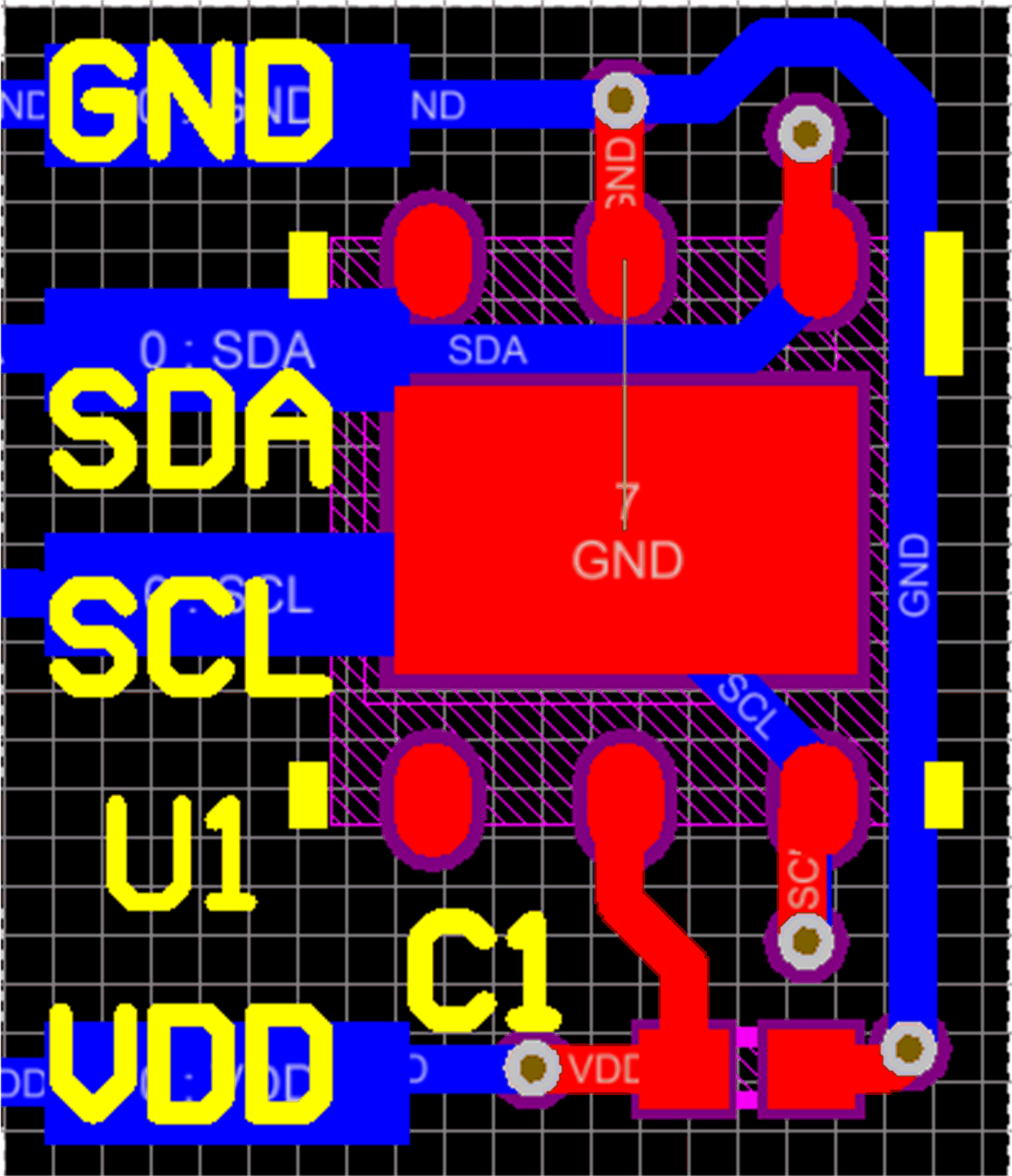SNAS658C May 2015 – December 2015 HDC1050
PRODUCTION DATA.
- 1 Features
- 2 Applications
- 3 Description
- 4 Typical Application
- 5 Revision History
- 6 Pin Configuration and Functions
- 7 Specifications
- 8 Detailed Description
- 9 Application and Implementation
- 10Power Supply Recommendations
- 11Layout
- 12Device and Documentation Support
- 13Mechanical, Packaging, and Orderable Information
Package Options
Mechanical Data (Package|Pins)
- DMB|6
Thermal pad, mechanical data (Package|Pins)
- DMB|6
Orderable Information
11 Layout
11.1 Layout Guidelines
The Relative Humidity sensor element is located on the top side of the package.
It is recommended to isolate the sensor from the rest of the PCB by eliminating copper layers below the device (GND, VDD) and creating a slot into the PCB around the sensor to enhance thermal isolation.
11.2 Layout Example
The only component next to the device is the supply bypass capacitor. Since the relative humidity is dependent on the temperature, the HDC1050 should be positioned away from hot spots present on the board, such as a battery, display or micro-controller. Slots around the device can be used to reduce the thermal mass, for a quicker response to environmental changes. The DAP may be soldered to a floating pad on the board, but the board pad should NOT be connected to GND.
 Figure 17. Layout
Figure 17. Layout